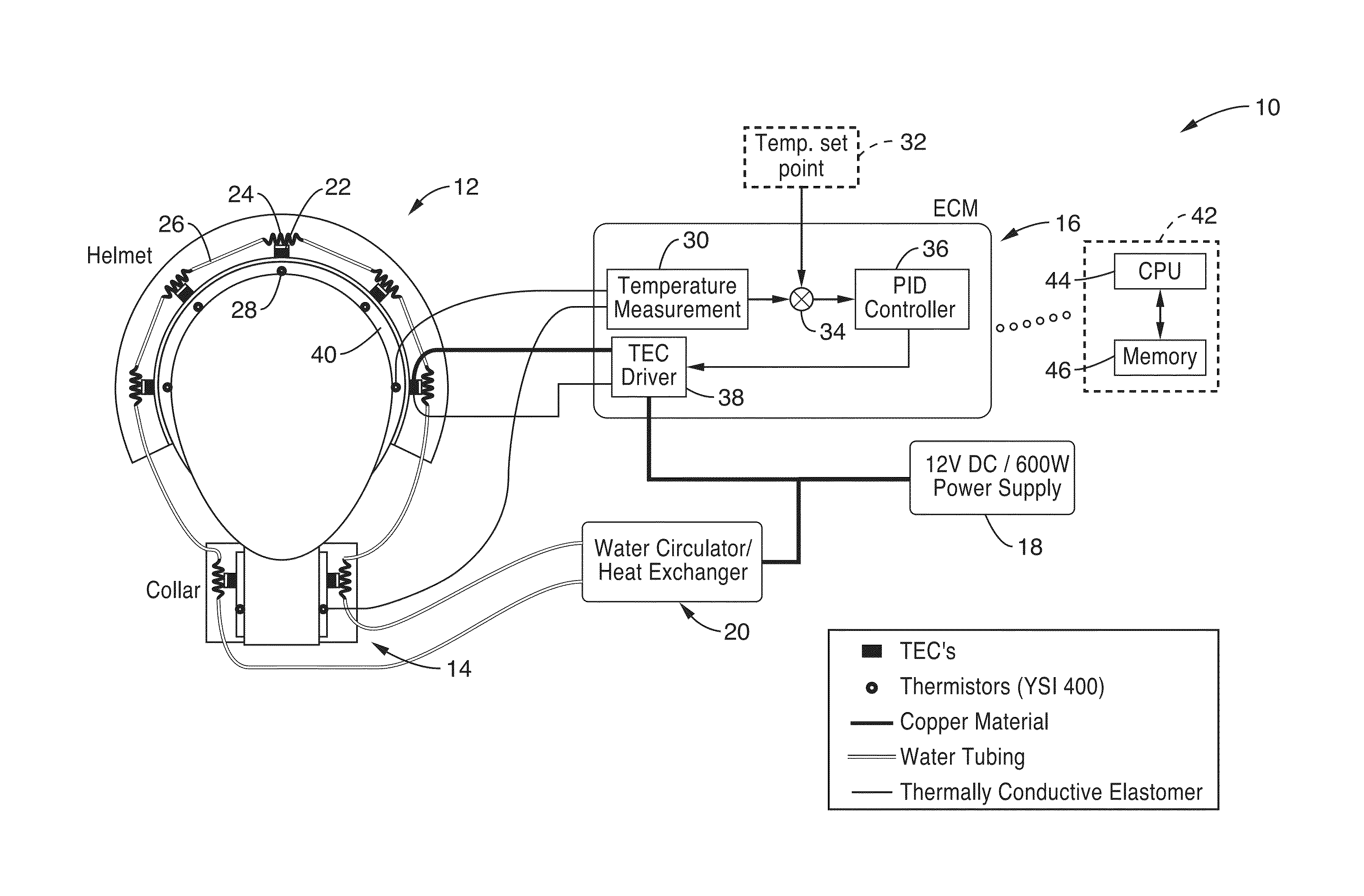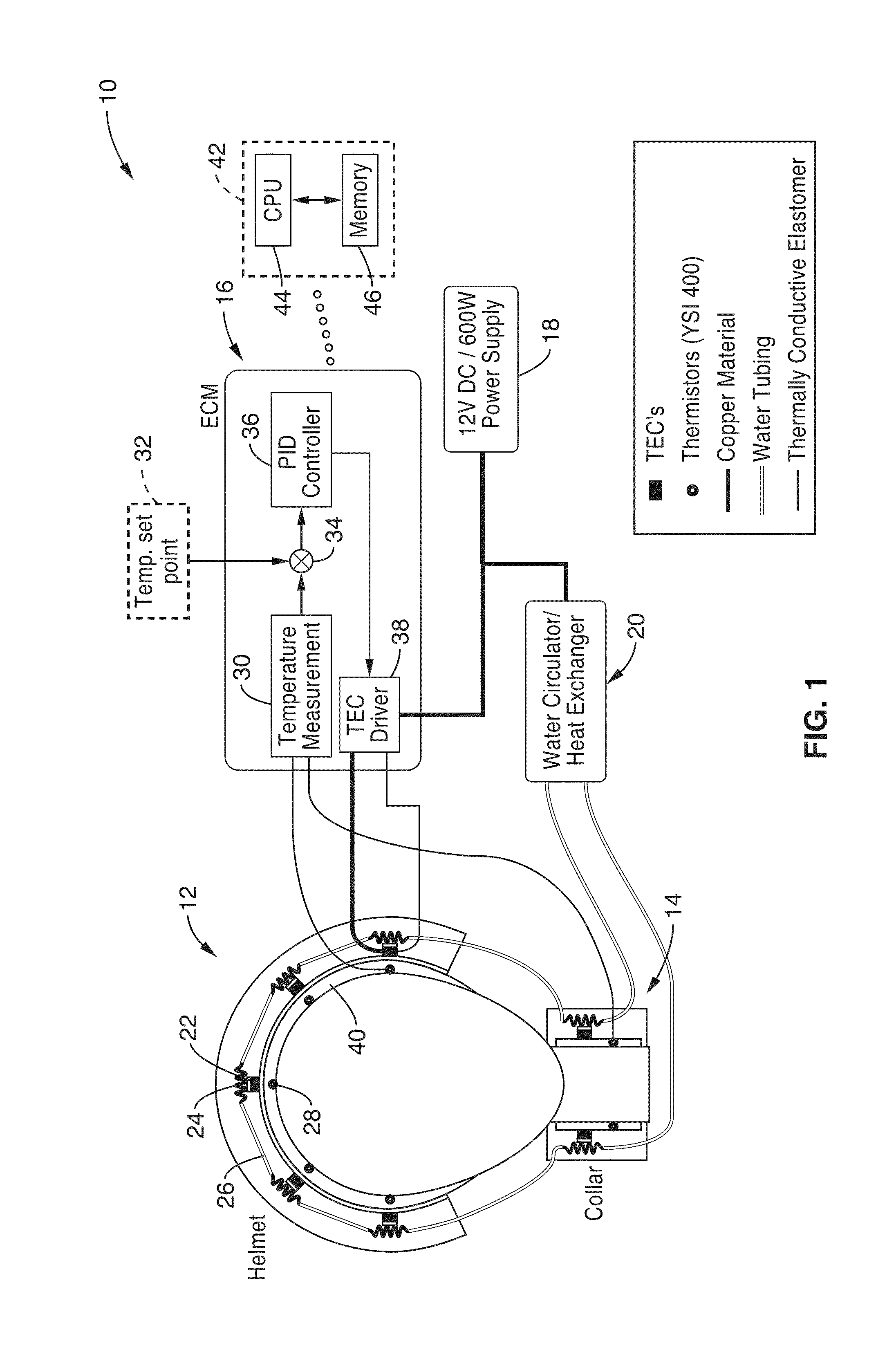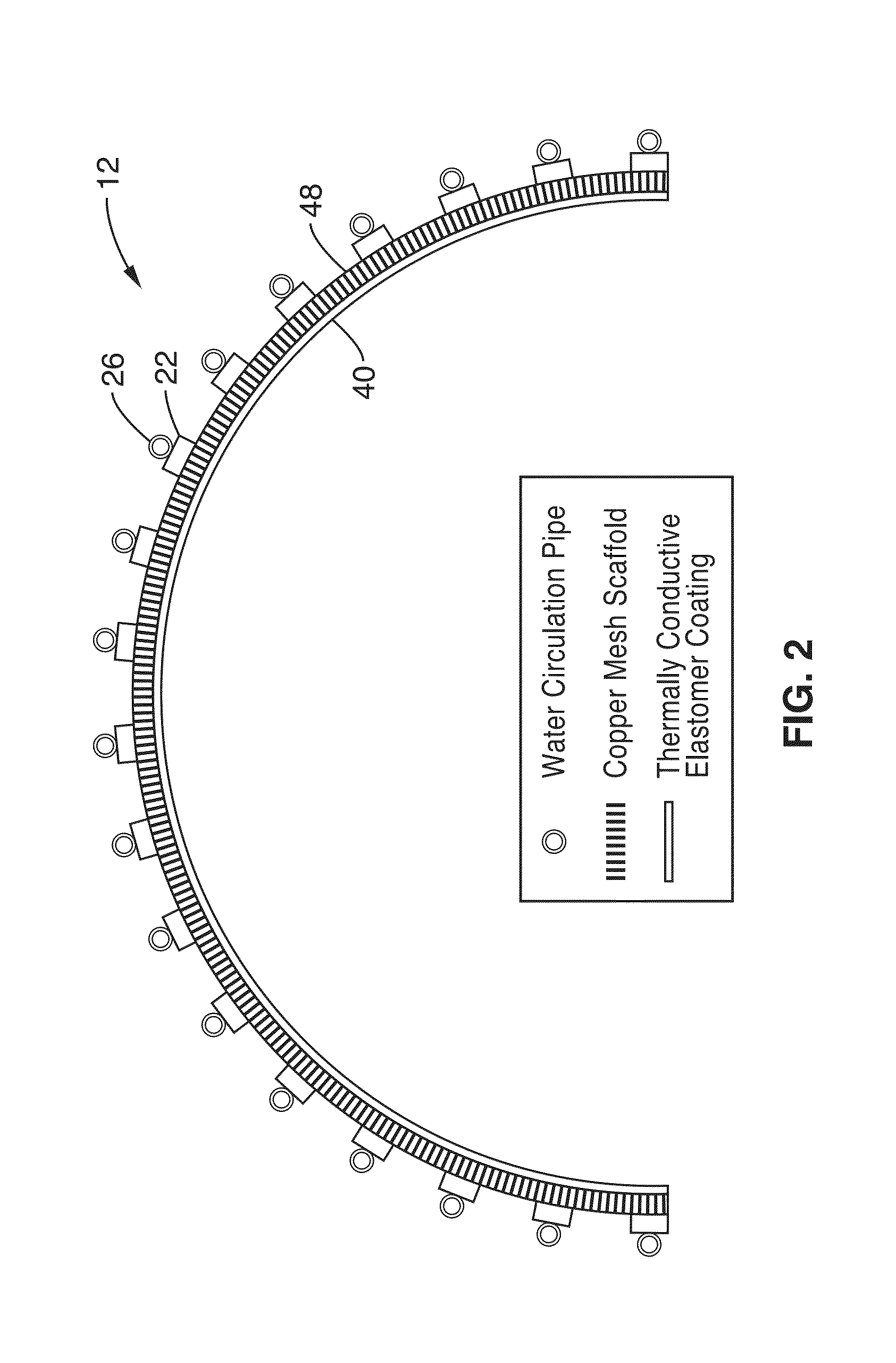Portable thermoelectric cooling device for therapeutic craniocervical hypothermia
a cooling device and craniocervical technology, applied in the field of portable thermoelectric cooling devices for craniocervical hypothermia, can solve the problems of inconvenient use, inconvenient use, and inability to carry,
- Summary
- Abstract
- Description
- Claims
- Application Information
AI Technical Summary
Benefits of technology
Problems solved by technology
Method used
Image
Examples
Embodiment Construction
[0025]The therapeutic portable thermoelectric cooling device is designed for the specific treatment of the head and neck in patients with acute neurological emergencies. It is also particularly well-suited for use in domiciliary treatment for individuals with chronic migraines and status epilepticus, and as a replacement for current (less sophisticated) external hypothermia devices in hospital facilities.
[0026]FIG. 1 illustrates an example embodiment 10 of the inventive portable thermoelectric cooling device. In this embodiment, a cooling and / or heating head gear (helmet) 12 is seen along with a cooling and / or heating neck collar (collar) 14. It should be appreciated that both the helmet and collar are configured as anatomically compliant structures. The helmet 12 and collar 14 are shown coupled to an electronic control module (ECM) 16, a power supply 18 and a combination coolant circulator and heat exchanger 20. In a preferred embodiment, power supply 18 is configured for making th...
PUM
 Login to View More
Login to View More Abstract
Description
Claims
Application Information
 Login to View More
Login to View More - R&D
- Intellectual Property
- Life Sciences
- Materials
- Tech Scout
- Unparalleled Data Quality
- Higher Quality Content
- 60% Fewer Hallucinations
Browse by: Latest US Patents, China's latest patents, Technical Efficacy Thesaurus, Application Domain, Technology Topic, Popular Technical Reports.
© 2025 PatSnap. All rights reserved.Legal|Privacy policy|Modern Slavery Act Transparency Statement|Sitemap|About US| Contact US: help@patsnap.com



